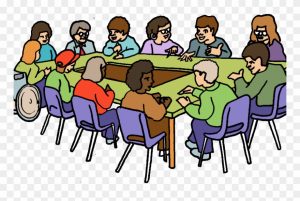Plan for Customizing Employment
An expected standard for any rehabilitation or employment service is the development of a plan that articulates the individual’s goals and charts the direction of CE services. In CE, the job is to be customized and driven by the individual, a dedicated plan for customization is necessary to assure that job offerings reflect the wishes of the employment seeker rather than job openings or existing relationships held by employment specialists. This plan, which should be derived from a planning meeting, should follow Discovery and the development of the Discovery document and should be disseminated, with approval of the individual, to those who are invited to the planning meeting.
The Essential Elements for a Plan for Customizing Employment
 A. The planning meeting should be held in a timely manner following Discovery and completion of the Discovery document. The more time that elapses between Discovery and the CE plan, the less potent the information will be. A planning meeting should be scheduled between two to four weeks following Discovery.
A. The planning meeting should be held in a timely manner following Discovery and completion of the Discovery document. The more time that elapses between Discovery and the CE plan, the less potent the information will be. A planning meeting should be scheduled between two to four weeks following Discovery.
B. With assistance as necessary, the employment seeker should approve all aspects of the planning meeting and plan for customizing employment. No aspect of a planning meeting should be decided on without the direct approval of the employment seeker. If the employment seeker needs assistance to understand the planning process and to make decisions, assistance may be provided by family, friends or an ombudsman whose primary duty is to the individual.
C. The planning meeting must be facilitated by an individual who participated in the Discovery process. To assure valid customization, the plan must be facilitated by staff who participated in getting to know the individual.
D. Those attending the planning meeting should be individuals who know the employment seeker, including individuals invited by the employment seeker and family. Those invited to attend the planning meeting should be individuals who have a relationship, personal or professional, with the employment seeker. If it is felt to be useful to invite a person who does not have a relationship with the individual, such as a community member with ties to the employer community or a behavioral specialist, permission should be granted by the employment seeker or family, as appropriate.
E. Those attending the planning meeting should be provided copies of the Discovery document, with permission from the employment seeker. The Discovery document is the collected information source for those attending the meeting. Agency staff should obtain permission from the employment seeker to share the document with those attending. Some employment seekers may request that the document be collected following the meeting to help maintain confidentiality.
F. The planning meeting should be attended by the job development or employment specialist who was involved in the Discovery process who will be contacting potential employers in efforts to negotiate a customized job.
G. The goal is to have at least as many individuals invited to the planning meeting who are not paid to attend as those who are paid to attend. This element of the plan seeks to establish a balance of power between the wishes of the individual and the needs of the agency and funders. Establishing this balance may require that the planning meeting occurs during evening or weekend hours. Willingness to accommodate schedules outside of “traditional” business hours may be necessary.
H. The planning meeting should provide a recap of the employment seeker’s strengths, needs, and interests as compiled in the Discovery document. Even though those attending the plan have a copy of the Discovery document, it is useful to outline the employment seeker’s strengths, needs, and interests so everyone is on the same page.
I. The planning meeting should generate a list of job tasks that fit the employment seeker to be offered to potential employers. Since CE is predicated on job tasks that fit the employment seeker, the plan should develop a set of tasks, in employer language, that can be offered to potential employers during job development.
J. The planning meeting should include a listing of specific employers, consistent with the employment seeker’s strengths, needs, interests, and vocational themes identified through the Discovery process, that will provide a job development blueprint for making employer contacts and should include any information that may have been collected through informational interviews with employers and their openness to be approached regarding various customization options. To help ensure valid customization, the plan should identify and prioritize a list of specific employers, including small, artisanal businesses that are consistent with the employment seeker’s interests and match their strengths and needs with the needs of the employer.
K. A copy of the plan for customizing employment should be provided to both the employment seeker and to the funder. Following the planning meeting, a typed copy of the results should be provided to both the employment seeker and the funding partner, such as is the case with an IPE in traditional VR process. This allows for a comparison of the plan with the actual outcome.
Written by the Workforce Innovation Technical Assistance Center (WINTAC) and the Youth Technical Assistance Center (Y-TAC) in partnership with Griffin-Hammis Associates, TransCen, Inc., Marc Gold & Associates, and Virginia Commonwealth University- Original Source: Department of Education’s Rehabilitation Services Administration
See additional pages of this Essential Elements
document:
